Feed aggregator
Interview: FuzzWolf on Furry Publishing
One of the biggest facets of getting a book published is, well, publishers! While many authors self-publish these days, the furry community is lucky to have several publishers and imprints focused on publishing anthropomorphic fiction.
Today we’re sharing an interview with FuzzWolf, an FWG member and the current owner of FurPlanet. We discuss many aspects of furry publishing, what drives book sales, and how to promote yourself as an author. Without further ado, let’s get to the interview!
FWG: For those that might not know you, please tell our readers a bit about yourself.
FuzzWolf: Hi. Well, my name’s FuzzWolf. Most people just call me Fuzz. I’ve been a furry since 1998. I’m originally from Scotland, but my family moved to the US when I was 8 so I don’t have the accent anymore.
In 2005 I moved to Dallas, TX to live with my boyfriend. It’s 15 years later and now we’re married and have a house so I’d say that worked out.
FWG: What do you think makes a good story?
FuzzWolf: Lots of different things, it depends. Characters you care about is the main one. You don’t always have to like them, but they have to be interesting and the reader has to be invested in whether they succeed or fail in what they’re trying to do.
There should be a clear goal, something the main character wants to do, and then there are obstacles in their way preventing them from that goal.
Another thing I enjoy in a good story is a degree of worldbuilding. It depends on the story whether the worldbuilding is very present, and the world itself is a character of sorts, or whether it’s more subtle worldbuilding where the story is more about the characters.
FWG: You work in publishing in the furry scene, so let’s dive into that! What got you into the publishing side of the fandom?
FuzzWolf: I had taken a “desktop publishing” class in college in the early 90s so there was some level of interest there long before I got into fandom publishing.
Like most publishers in the fandom, I started off as a writer. I was published in FurNation Magazine. FurNation was based here in Dallas so I picked up one of my contributor copies in person, and the owner showed me around the equipment he used to make the magazines. I was fascinated by it, and I started helping out. I volunteered with FN for a bit, doing layouts and making magazines and comics by hand.
After I was laid off in 2007, I decided I wanted to start my own publishing business. By the way, this is the exact opposite of what all the “start your own business” guides will tell you to do. Don’t start a business because you’re done with corporate America after getting laid off. You have few resources to work with and you’re not in the right headspace. I got a new job later that year, but the passion for publishing was still there so I moved forward.
Eventually, I ended up acquiring FurPlanet from its former owner and officially took over in March 2008.
FWG: What kind of unique challenges do you face as a publisher of what might be considered niche literature?
FuzzWolf: There are probably as many benefits as there are challenges. I suppose the biggest one is audience size. As with the rest of society, only a small percentage of people read books, and you cut that number down even more when working within a small niche like furry. So, a furry company is likely to hit a growth ceiling sooner because there are only so many furries out there.
However, like a lot of niche interests, the people who are into furry are really into furry. And the furries who buy books are super supportive of their publishers.
I wouldn’t call this a challenge so much as it is a difference between mainstream and furry publishers. For mainstream publishers, the majority of their book sales are going to be sold online at that big river dot com company, and maybe some through traditional bookstores. A minority of our sales are through those avenues. We sell almost all of our books directly to consumers without an intermediary, either via our website or face to face at conventions. That means more work for us, either packing and shipping online orders, or all the work that goes into dealing at a convention, but it means we interact with our customers directly and I think that’s a positive thing.
FWG: FurPlanet puts out several anthologies a year, but also several novels. Do you get a lot of pitches for novels? If so, do you publish many of them?
FuzzWolf: We have it on our website that we’re not officially open for novel submissions so we don’t get that many. Most of the novels we publish are new books from authors we have already been working with. I would like to open up to additional authors at some point. It’s just a matter of time being available to do so.
FWG: Going back to anthologies for a moment, how do these compare in sales to novels themselves?
FuzzWolf: A couple of years ago, I went through our sales data back to 2006 to answer that question. I found that in general, anthologies sell only about 1/3 what novels and novellas do.
FWG: There’s plenty of furry writers who focus on getting stories into anthologies. With those numbers, would you suggest writers consider focusing on getting their own novel out there to help increase their prestige or name recognition?
FuzzWolf: I enjoy short stories, and I think they serve an important function for writers. They give authors a chance to work with an editor and go through that process of having someone from outside their friend group review their work, and work with them to make it the best story it can be. Anthologies also give experience in writing and revising to a deadline and writing towards a specific theme. Submit stories to enough anthologies and you’ll get to write about a lot of different things. Broadening your writing beyond your preferred genre is a critical step in a writer’s development.
They also get your name in front of a publisher. I know I’ve personally advised authors I’ve seen write amazing short stories that I want to see their novel when they finish it.
Also, in both mainstream and furry writing, short stories are how a lot of authors build an audience and get their name out there. You can also repurpose the stories after their exclusivity period has expired, depending on the particular contract. This gives you content for your various galleries (FA, SF, etc), and if a market is open to reprints and you happen to have a previously-published story which fits then you can get paid twice for it.
Even if you’re not submitting to anthologies, I still think writing short stories and posting online is good for building your skills and growing an audience. Even writing to a weekly prompt achieves some of that diversity of stories.
I’d recommend submitting short stories and posting them online while also working on a longer-term project, like having a novel idea brewing in your head.
FWG: FurPlanet puts out ROAR and FANG annually. Are there any challenges getting an anthology series out yearly? Differences between these anthologies and one-off anthologies?
FuzzWolf: There are definitely challenges with keeping a regular title going, especially if you’re trying to keep them releasing at the same time each year. We aim to release FANG and ROAR at Anthrocon every year, but this year we missed that mark due to COVID 19 throwing the world into chaos.
With a one-off anthology there is less of an issue if you have to postpone a release since there isn’t a second volume that has to come out in 12 months that may also be affected.
There is also the matter of editors. With our regular series, we have the advantage of working with an editor for several volumes over a period of time, and they improve their skill with each volume and learn our expectations. There can be a few bumps in the road early on in a working relationship so the one-off anthologies have that. We take a chance when we do a one-off because it doesn’t have name recognition going back years like our regular anthologies do. We just have to hope that the theme resonates with readers.
FWG:A lot of furries say you have to write or draw sex to be successful in the fandom. You’re in a unique position to know about this directly. Do adult novels sell better than those for general audiences?
FuzzWolf: Speaking very broadly, our adult books do sell better than our general audience books. However, there are a ton of caveats to that.
For one thing, in the mainstream book trade Adult Fiction simply means books for grownups, as opposed to Young Adult or children’s book categories. In the fandom, we label books as adult in part due to how conventions define them. If a book has a couple of explicit scenes, even if the sex is not the point of the book, we have to label that adult. But in an actual bookstore, they don’t have a big warning sticker plastered on American Gods, for example.
I’ve seen books with a lot of sex sell moderately, and books we marketed as YA sell extremely well. You can be a non-adult writer and have successful books. You just have to tell a good story and find your audience.
FWG: How important is cover art to selling a furry novel? Do you think employing well-known artists in a fandom that tends to be visually focused helps sell books?
FuzzWolf: I cannot overstate how important cover art is to selling books, any books. The audience for each genre has certain expectations when it comes to covers. This is where things like minimalist typographic covers for science fiction and literary fiction, shirtless men in kilts in romance, and painted castles in fantasy come from.
In general, furry readers want to see a furry on the cover. Don’t go abstract, even if it’s beautiful. If you are trying to sell primarily to furries, you have to have furries on your book cover.
A well-known artist will help with sales. Not only for their highly developed skill, but because they will often assist with promoting the book. Here’s a tip, always credit your illustrators. Do so in the book, and also in your marketing material. If you tweet the cover of your book, include your artist’s Twitter handle. They will often retweet it, and very often their following will be bigger than yours.
I’ve heard writers complain sometimes about furry being such a visual community, but I’d like to stress that artists should be your friends when it comes to selling your book. Artists and writers can and should work together.
I’ll also add that you don’t have to go with the most popular artists if that is out of your budget. You can find a lot of skilled artists who are not that well known, and a book cover commission can offer less well-known artists access to a new audience.
To summarize my feelings on covers, they say you should never go cheap on a mattress or a pair of shoes. When it comes to books, put your budget into your cover. It will help.
FWG: What about books having interior pictures? Is this worth doing for most releases?
FuzzWolf: This has been a point of discussion among some of us before. I think what it comes down to is if you want interior illustrations because they’re cool, or you really want to see your characters illustrated then it can’t hurt.
In my experience, it doesn’t help sales though. If you have a set budget and are weighing between interior illustrations or a better cover then I’d put the money into the cover, another editor pass, or another type of marketing.
FWG: Can you give any insights on the process of getting artwork for books for our readers who might be curious or self publish?
FuzzWolf: Look at the books which have covers you really like or that drew you to the book. You can hire that same artist or someone with a style that appeals in the same way.
An important thing to remember is that a great piece of art and a great book cover are not the same things. Sometimes a piece will work as a standalone illustration, but won’t be appropriate for a book cover.
Another point to ask is if your artist has any experience with typography and design. Are they sending you a cover with your title and name on it already? Or are they just doing the art? If it’s the latter, you’ll want to find a graphic designer to work on the actual layout for you.
On that note, I’d also advise hiring a typographer for your interior layout. There are subtle nuances to typography that can affect the visual appeal and readability of your book. It seems easy, but a lot of time goes into it, and I consider a worthwhile investment.
FWG: What would you say is the one thing you wish all writers knew about publishers and publishing books?
FuzzWolf: While a deep love of books is usually what drives someone to publishing, you’ll have to deal with a lot of less fun things too. Contracts, accounting, taxes, printers, marketing. If you can accept that challenge, you’ll be in a better position to be successful.
FWG: Do you have any last thing you’d like to tell our readers?
FuzzWolf: Please continue to order books and comics from all the furry publishers and our community’s independent sellers. You can support furry-owned businesses and the post office at the same time!
We would like to thank FuzzWolf once again for answering all of our questions! FurPlanet will be having an online book launch for Kyell Gold’s final volume of Love Match. The book releases August 25th and the book launch will take place this coming weekend. You can read about the book and pre-order it on their website and find details on the book launch here.
We hope this insight into furry publishing was informative to all of our readers. If you have ideas or suggestions on what kinds of interviews we should feature next, please contact our Social Media Manager. Until next time, may your words flow like water.
小羅的獸/毛雜圖合集3
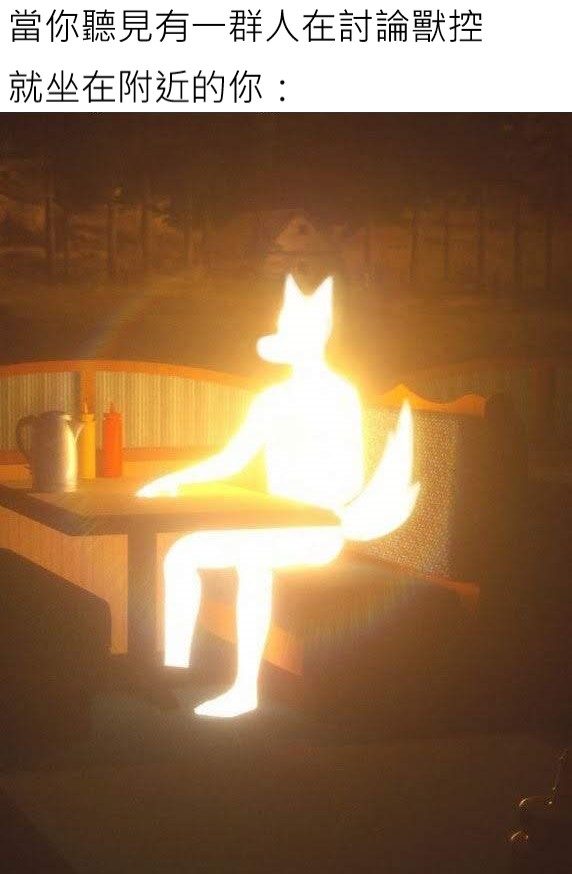
阿阿阿阿阿
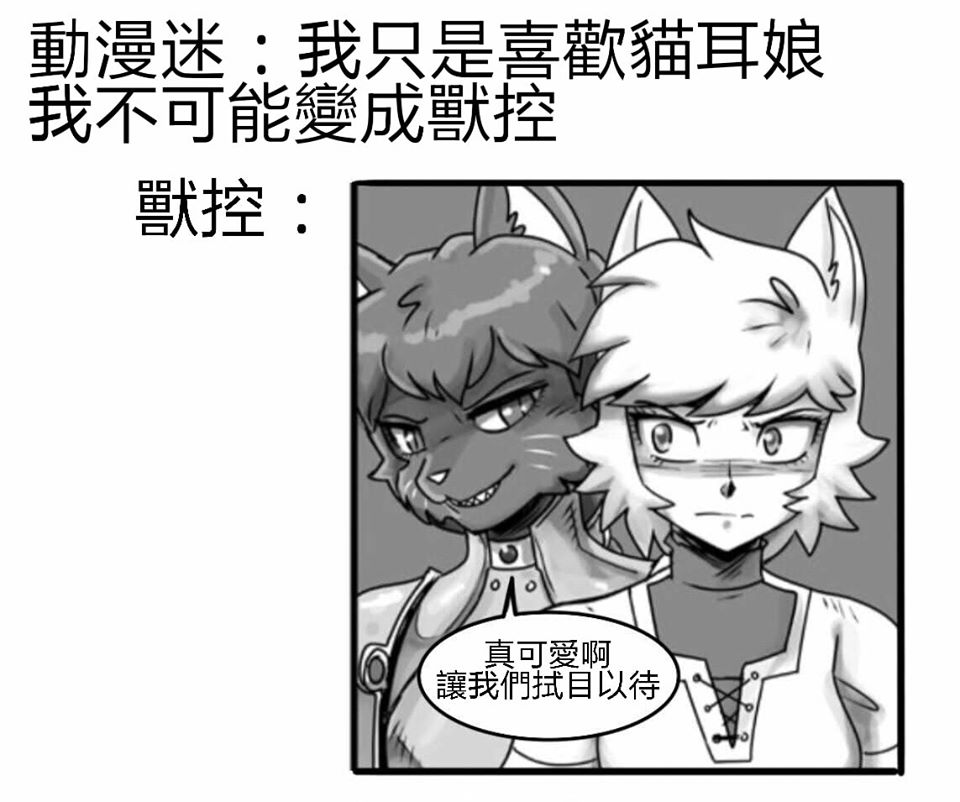
喔 是嗎?

戴口罩拉

OwO

士郎我公(x
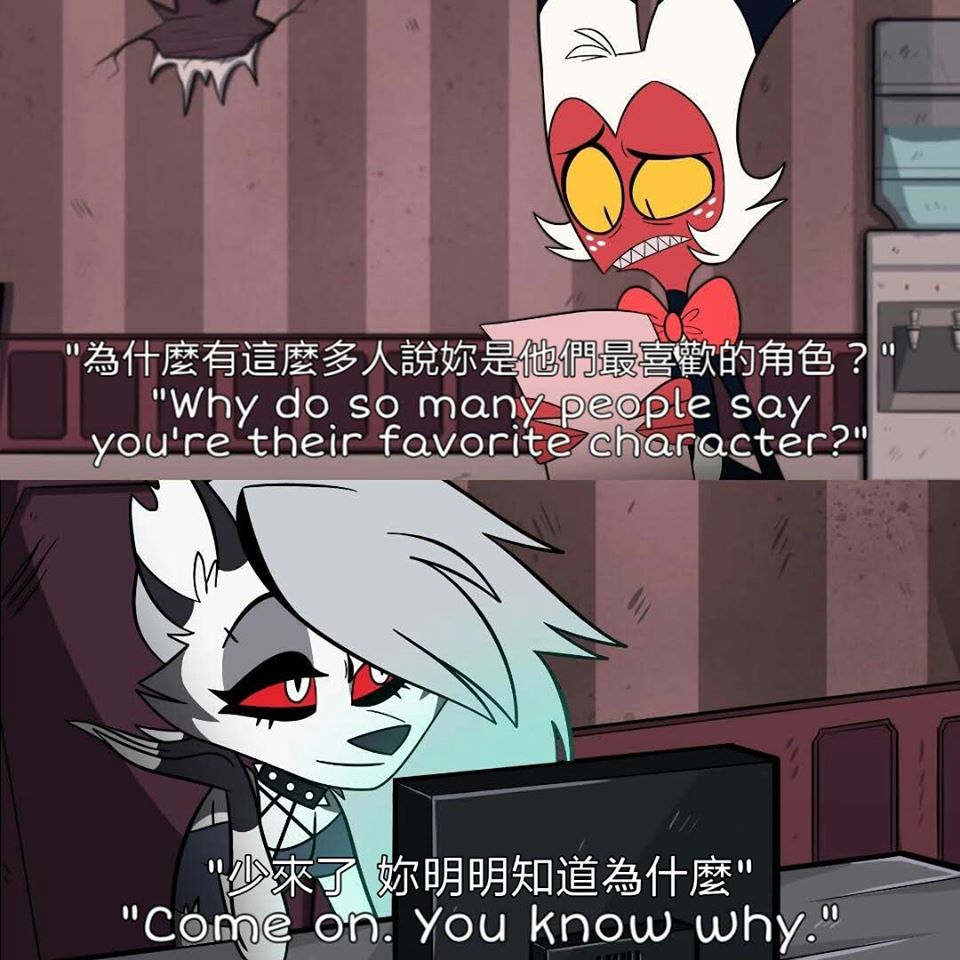
我不知道 求解釋
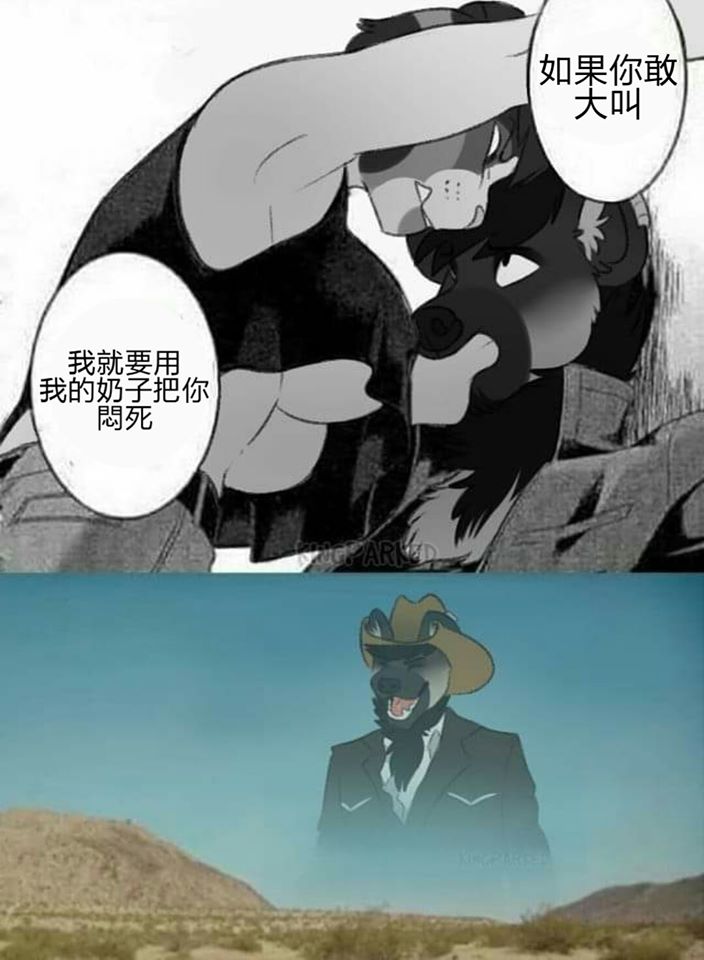
那我就不客氣了
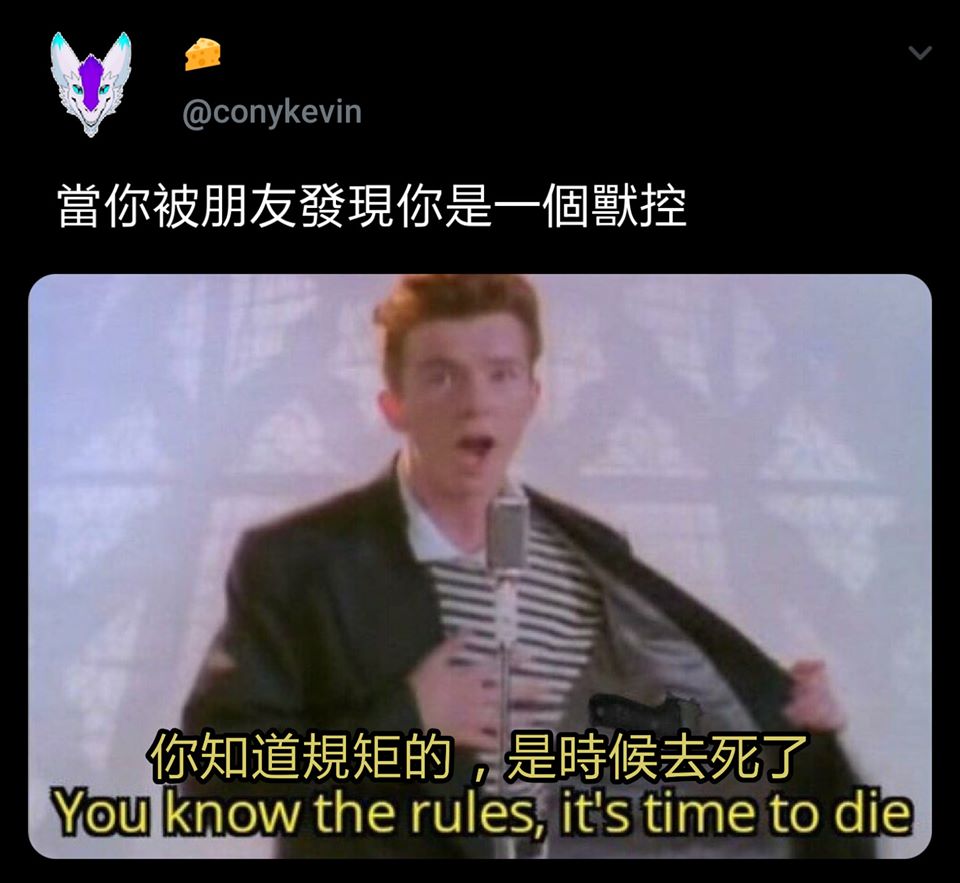
這樣比較好解釋
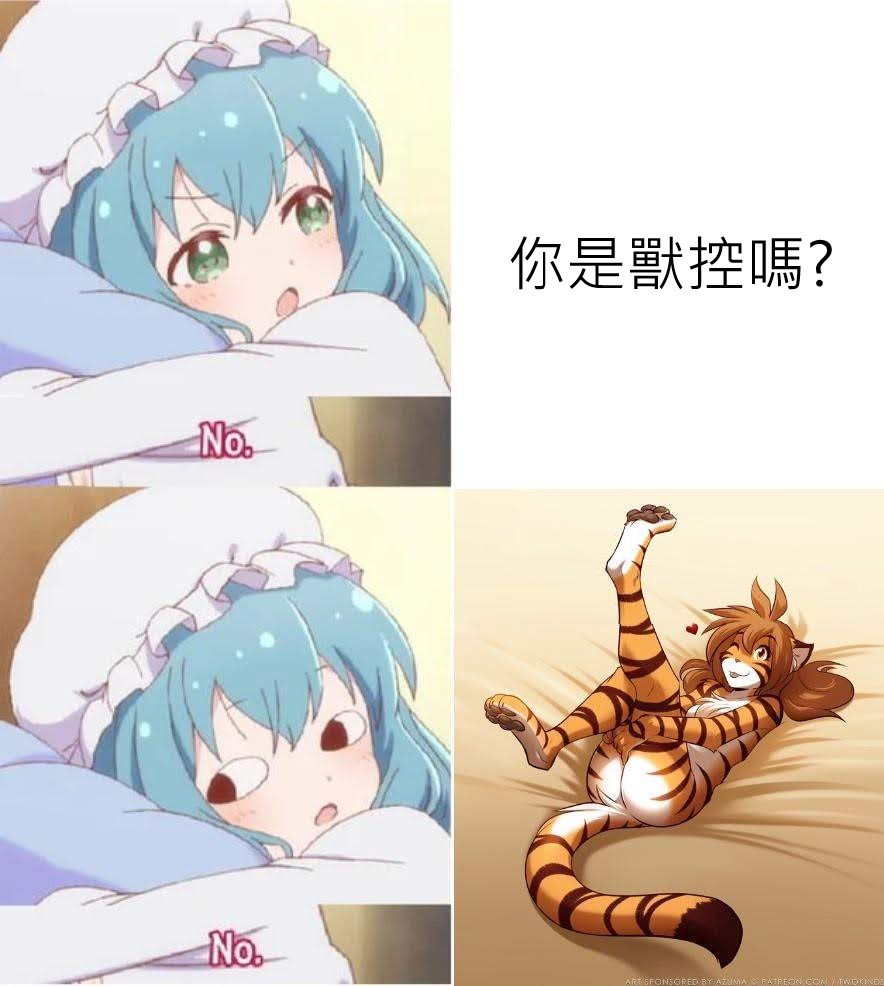
心虛
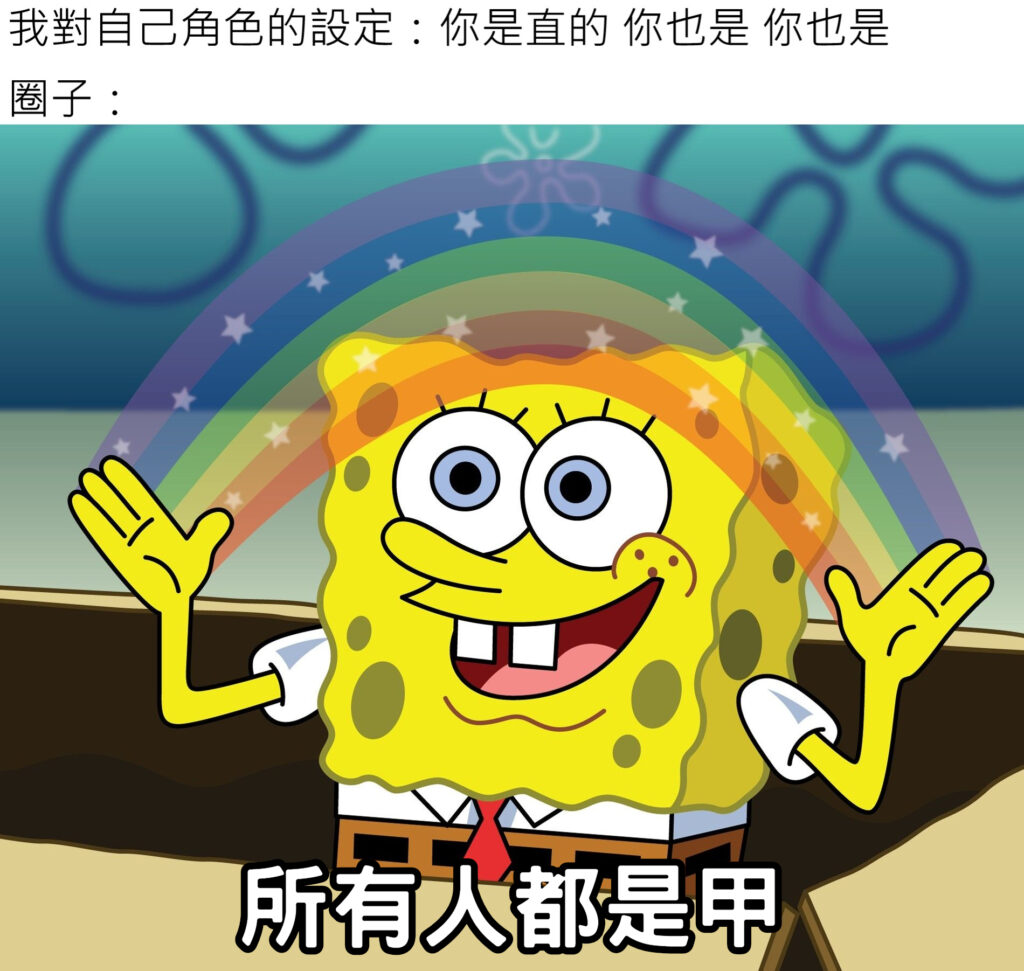
G A Y
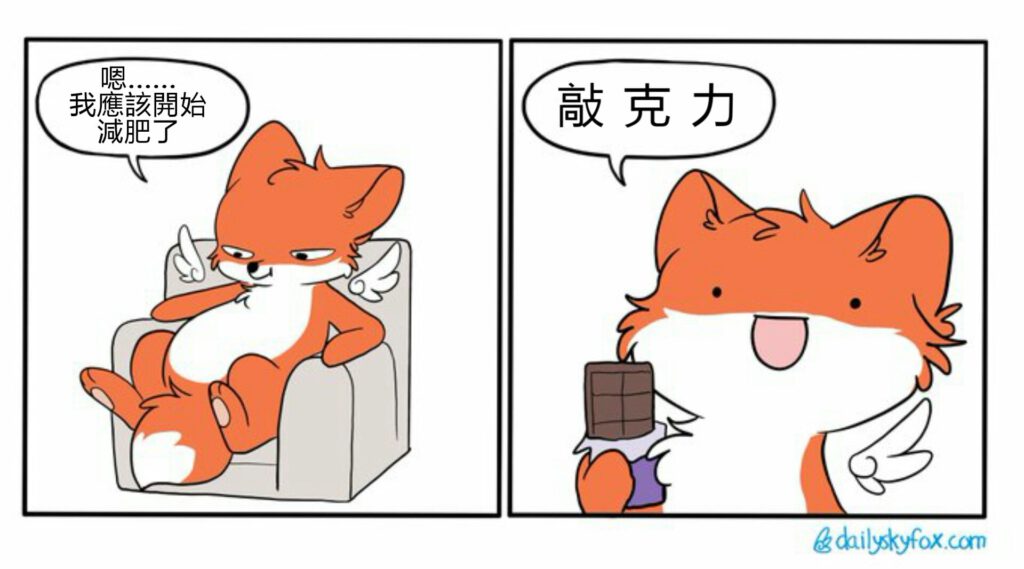
繪師 : https://twitter.com/dailyskyfox/status/1239684949378240513?s=20

肉球

不只20分鐘的冒險
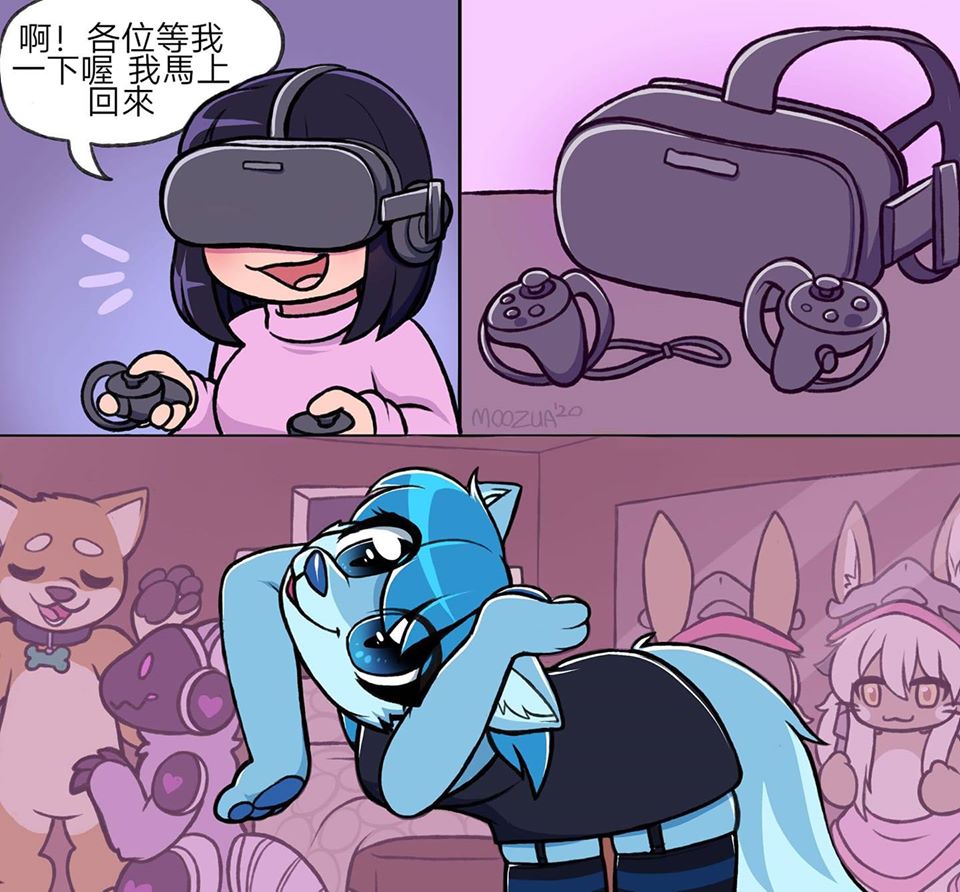
骨折
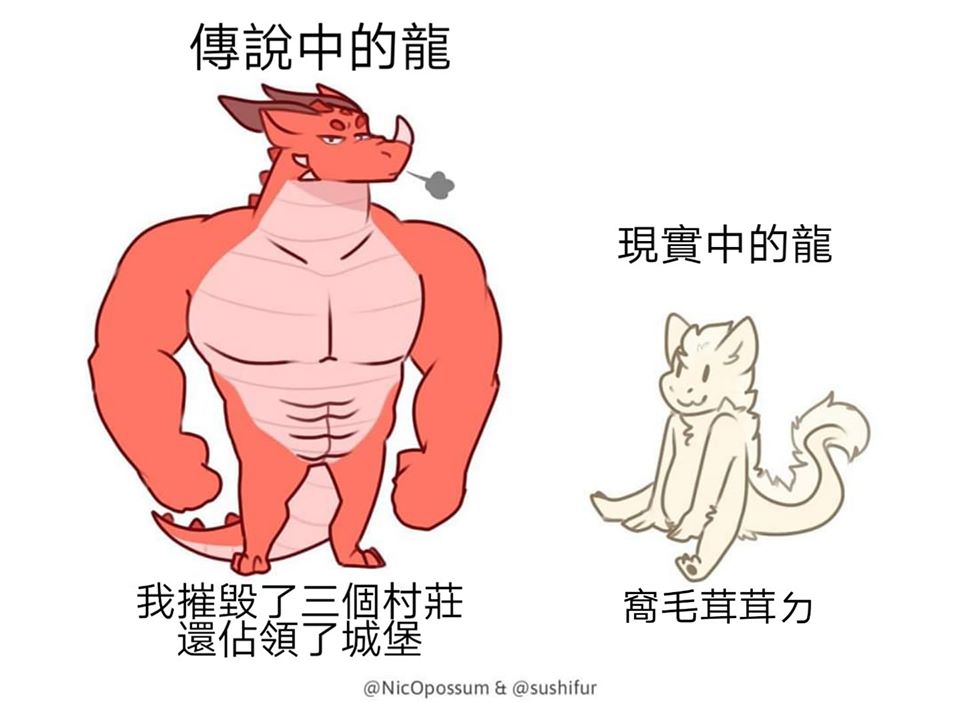
繪師:https://twitter.com/sushifur
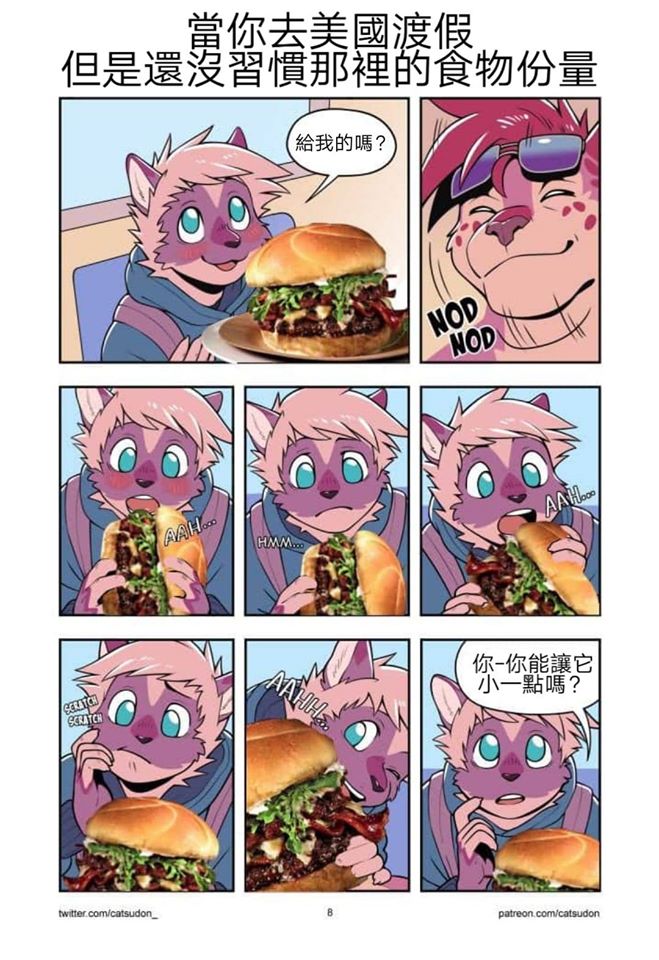
份量太大
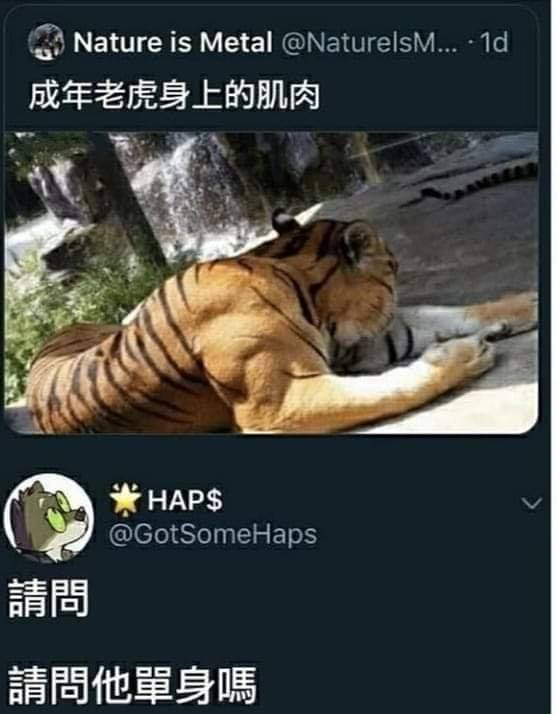
這很重要!
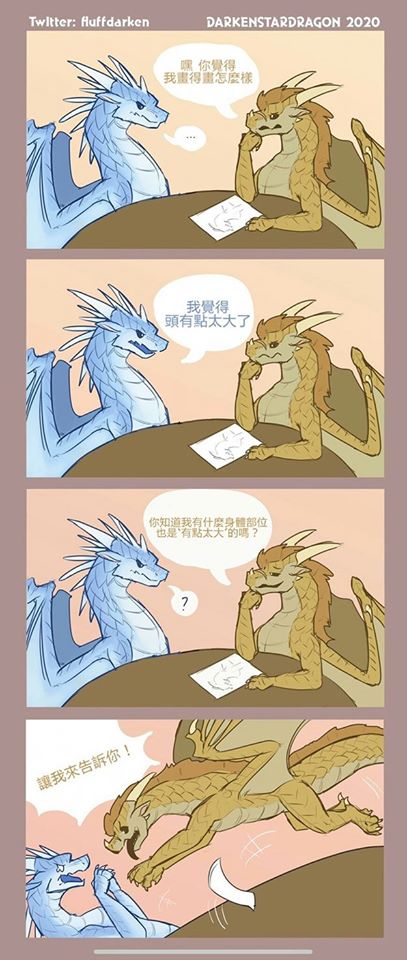
繪師:https://twitter.com/fluffdarken/status/1242469203887587329?s=20

夏日祭典——小瑜《衝浪》
已經八月中了,但是夏日祭典活動依然在持續著,離夏天結束還遠著呢!夏天也是個水上活動的好季節,自由潛水、衝浪、滑水、賞鯨等等,說得小編也好想去玩一下呢XD
今天的圖是由繪師小瑜帶來的《衝浪》,在沿岸的狂浪間穿梭、激起的浪花在衝浪板後方飛濺的畫面,實在是很帥氣啊!希望這張《衝浪》可以讓大家看到時瞬間暑氣全消哦~

作者:小瑜
作品名稱:衝浪
Interview With Madison - Ally, White Privlege, & Transitioning

Resources, Social Media & Donation Links
Follow Madison
Madison's Website
Big thanks to Ren the artist for his contribution! Check him out on Twitter and show him some love.
On August 16th I sat down with Madison Scott-Clary an accomplished author of furry literature. With the recent release of their latest publication, Ally, I wanted to get into the nitty gritty of what motivates her and how the furry fandom drew her in.
She shares her laid back, yet enlightened opinions on white privilege and how it affects her. In addition to describing what it is and how you, as a white person, can grow to accept it and use it as a motivator to be a better person.
As a proud trans woman she's not afraid to be herself. A virtue she attributes greatly to exploring being a "vixen" which would lead her down the path she's on currently.
Thanks so much for listening!
TigerTails Radio Season 12 Episode 36
ET On Your TV
We just found out about Earth To Ned, the new science fiction TV series from the Muppet folks at The Jim Henson Company. “The galaxy’s first alien-hosted talk show” will start streaming on Disney + starting September 4th. “Produced by The Jim Henson Company and Marwar Junction Productions, Earth to Ned is a decidedly different take on the late-night talk format. It stars extraterrestrial-creatures Ned and Cornelius as they interview terrestrial stars. Each episode focuses on a topic or theme that is unique to Earthlings and fascinating to Ned, including comedy, sports, social media and fashion. Ned beams in celebrity guests from across the known universe, and the more he learns about our human culture, the more obsessed he becomes.” Take a look at the review on Deadline, and check out the trailer video there or on YouTube.
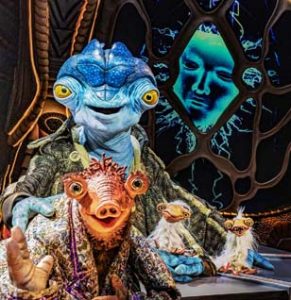
image c. 2020 The Jim Henson Company
夏日祭典——神原明野《海灘的守護者》
夏天一到,許多獸不外乎都想來去海邊清涼一下。涼爽的海風搭配上清涼的海水,可謂是夏日消暑的最佳組合!然而,在海邊遊玩時,如果遇到了緊急狀況,就需要呼叫海灘上的守護者——救生員!
這次皓然要為各位帶來的,是由神原明野所繪製的《海灘的守護者》。當各獸在海灘上需要幫助時,海灘的守護者就會是你的救星。就讓我們一起來欣賞由神原明野帶給各獸的作品吧!
作者:神原明野
作品名稱:海灘的守護者
Danger! Duck!
One of Sonic the Hedgehog’s non-human adversaries gets his moment to shine in Sonic The Hedgehog: Bad Guys, a new full-color comic miniseries written by Ian Flynn and illustrated by Jack Lawrence. “The Shadowy Scientist is back to his evil antics… And what better place to concoct nefarious plans than one of Dr. Eggman’s abandoned bases? But that is easier said than done when badniks are guarding the entrance! Dr. Starline knows he can’t do it alone, so he decides to recruit some familiar and not-so-friendly faces.” Coming soon from IDW.
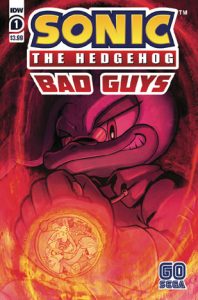
image c. 2020 IDW Publishing
[Live] Dingo Lingo

First a quick roundup, then we’re joined by Linnea, the current president of Furry Writers Guild for a quick interview discussing the guild, furry literature, and her new novella What Makes a Witch.
FurCast is sponsored by Twin Tail Creations. Use coupon codes REDWOLF or BLUEFOX to save up to 20% on silicone products during checkout. Free FurCast Themed Colorations are also available which can be applied as a color choice to your toy purchase.
Link Roundup:- Telegram is 7 years old, has 400 million users, video calling alpha released
- Virtual versions of Furnal Equinox are coming out
- Virtual versions of Furrydelphia are coming out
- A mention of another furry podcast we found: Phyla and Fandom
- Godzilla vore ride
- Wolfgun’s Projections Game Trailer
- US Consumer product safety has a Quinn Quarantine Fox
- Epic vs Google and Apple
- Defcon Furs is going on
Bearly Furcasting #16 - Temperance/Momo Mouse, 5 Minute Furs, Really Bad Jokes
MOOBARKFLUFF! Click here to send us a comment or message about the show!
This week we chat with suit maker and dancer Temperance/Momo Mouse. We get 2 furs in our 5 minute furs fur fun, and Bearly and Taebyn trade some really bad Dad jokes and pun. The episode is chock full of fun and excitement! Join us! You Won't Be Disappointed!
Thanks to all our listeners and to our staff: Bearly Normal, Rayne Raccoon, Taebyn, Cheetaro, TickTock, and Ziggy the Meme Weasel.
You can send us a message on Telegram at BFFT Chat, or via email at: bearlyfurcasting@gmail.com
This Cat Walks Through More Than Walls
Inkblot is a new full-color fantasy comic series coming soon from Image Comics. “Third-generation comic artist Emma Kubert partners with up-and-coming creator Rusty Gladd to deliver a high-fantasy epic! This new ongoing series follows a powerful sorceress attempting to correct her greatest mistake: The creation of a magical cat that can travel through time, space, and reality. The cat threatens to unravel the fabric of the universe, doesn’t care, and just won’t listen!” Look for it this September — before it’s too late!
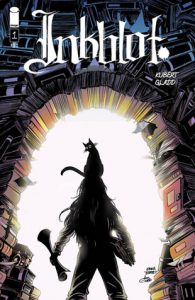
image c. 2020 Image Comics
Episode 471 - Scremcast - Savrin talks about some things they've enjoyed in the intervening weeks because folks... it's not good out there. LINKSThe Fandom on YT - https://www.youtube.com/watch?v=iv0QaTW3kEYTelegram Fan Chat - https://t.me/joinchat/CGL2Z
Savrin talks about some things they've enjoyed in the intervening weeks because folks... it's not good out there.
LINKS The Fandom on YT - https://www.youtube.com/watch?v=iv0QaTW3kEY Telegram Fan Chat - https://t.me/joinchat/CGL2Zj9oiYOXuQPOJXOrsg
Episode 471 - Scremcast - Savrin talks about some things they've enjoyed in the intervening weeks because folks... it's not good out there. LINKSThe Fandom on YT - https://www.youtube.com/watch?v=iv0QaTW3kEYTelegram Fan Chat - https://t.me/joinchat/CGL2Z夏日祭典——安尼歐《海灘事件》
今天一樣是帶來海灘場海灘場景的作品,是由安尼歐帶來的《海灘事件》。等等……泳褲居然被奇怪的螃蟹剪破啦!接下來的畫面兒童不宜,就讓我們把畫面定格在這一秒,欣賞這幅作品吧~(前任總編艾倫德表示找到彩蛋他會送你一張優惠卷哦XD

作者:安尼歐
作品名稱:海灘事件
Turtles Again — Whoops!
We try to keep on top of things here, so we thought we should update the latest Teenage Mutant Ninja Turtle news for those of you who follow them. Remember The Last Ronin, the newest TMNT comic miniseries? Well according to Bleeding Cool, there have been some last minute changes to the upcoming release. “Esau Escorza and Isaac Escorza, best known for their work on Tarna for Heavy Metal, are now joining the art team with Kevin Eastman, but Andy Kuhn is no longer listed on the creative team. Apparently, this stems from poor retailer reaction to The Last Ronin preview, and a new sampler is in the works.” Also, the release date has been pushed back again to the end of October. An interesting side note: The original script for The Last Ronin, written by Eastman and Laird in 1987, set the action in the far future — of the year 2017. Obviously, that needed to change!
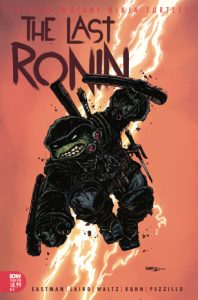
image c. 2020 IDW Publishing
Interview: Mary E. Lowd on Writing and Species as Allegories
Did you know that both National Dog Day and National Cat Day both occur in August? Before you think this is a weird way to start a post on the FWG blog, we promise the pieces to the puzzle will be arranged shortly.
Today we are sharing an interview with Mary E. Lowd who is not only a Furry Writers’ Guild member but has also recently had the novel “When a Cat Loves a Dog” published by Goal Publications. We sat down with Mary to discuss writing in general, her new book, and using species as allegories in stories. Enough with the introduction, let’s get to the interview!
FWG: For those that might not know you, please tell our readers a bit about yourself.
Mary: Hey, readers. I’m a science-fiction and furry writer who lives in Oregon. I grew up reading the Redwall books by Brian Jacques and watching Star Trek: The Next Generation — the combination of those pretty much established my aesthetic. After college, I spent a period of time that felt like forever (but was apparently only seven years) trying to be a serious science-fiction writer whose stories centered on humans… and failing horribly, by way of writing Otters In Space.
Then I discovered the furry fandom, joined the Furry Writers’ Guild, started writing for furry anthologies and furry publishers, and have somehow ended up a decade later editing my own furry fiction e-zine.
FWG: What do you think makes a good story?
Mary: For me? Spaceships and talking animals. Robots are also good, maybe some magic. Seriously though, every reader will have a different answer, and those answers will vary depending on the day. Right now, during a global pandemic, I’m probably more interested in escapist wish-fulfillment stories than hard-hitting incisive idea pieces. And that’s okay. Fiction fills many roles — some stories will change how you think about the world forever; other stories simply help you get through a hard day.
FWG: To say you are a prolific writer would be an understatement. You have won several awards (including our own Coyotl Awards), have over 150 published short stories, and even run your own e-zine. How do you manage balancing your life while maintaining so much writing output?
Mary: I… don’t. I’ve been fighting with my husband about this very question a lot over the last month. He’s incredibly supportive… but then, also… not. Because come on, we live in a society that puts different pressures on women than on men, and even when he tries to do half of the work it ends up being a smaller half, and I can either pick up the slack or… let the house fill with trash and the children run wild. So, looking forward to a year of, essentially, homeschooling due to the pandemic… well, I don’t know. I’m exhausted, and every day, there’s another day tomorrow. Somehow though, I’ll keep writing, because as far as I can tell, I became a writer because it soothes my intrinsic anxiety.
There was a time when I had to do my writing with a baby on my lap, a six-year-old next to me, and Blue’s Clues taking up half of my computer monitor. So, I’ll manage somehow, but I don’t know how. I do have a special cheat code though: my mom is the most amazing, and she lives next door. So, a great deal of the writing I get done is directly due to her support and willingness to watch my kids for big chunks of time.
FWG: We also have to ask, with so many published works, do you have any tips for our readers on how to get stories or books accepted by publishers?
Oh goodness, so much… But this question is really too broad, because the answer is entirely different for short stories vs. novels, and then again completely different depending on the type of novel publisher. In every case, persistence is key. Sadly, rejections are the cornerstone of most successful writing careers. Get used to them. Find ways to celebrate them. The writing group I was in for a decade had everyone announce their rejections from the week at the beginning of every meeting and then be rewarded with chocolate.
I like to think of my rejection total as an ever-growing high score. Right now, it’s 1682, and that will likely be out of date by the time this interview is posted. Because the rejections don’t stop; you don’t graduate out of them; you just learn to weather them and keep persisting. And I promise, with practice, they do get easier.
FWG: So we have established you’re well published, but what is your favorite of all them that you have written?
Mary: This is always a hard question, because if I didn’t love a work enough to pour my time and energy into it, then I wouldn’t bother writing it. However, I think I have to go with Nexus Nine. When I was a kid watching Star Trek: Deep Space Nine, Jadzia Dax was my favorite character. She may still be my favorite character of all time.
Anyway, my heart was broken when she died at the end of season six, but then when Ezri Dax showed up at the beginning of season seven, lost and confused by holding Jadzia Dax’s memories without actually being her… I can’t really explain the emotions I felt. Her first scene is incredible. She’s both Dax and not Dax, and I immediately loved her and felt for her plight, even while missing Jadzia and knowing they weren’t the same.
I wanted to write about that kind of character, and so I created Mazel Rheun, a calico cat with a computer chip in her head that carries the memories of dozens of previous individuals, most recently the dog who was her captain. Star Trek: Deep Space Nine is a big part of my heart and who I’ve become, and Nexus Nine is my love letter to it.
FWG: When a Cat Loves a Dog was recently published by Goal Publications. Can you tell us a little about the book?
Mary: When a Cat Loves a Dog originated with the character of Topher Brooke, a pug dog comedian who makes fun of cats ironically. See, Stephen Colbert used to have this show called The Colbert Report where he presented the news while pretending to be a rightwing numbskull. So, I was playing my standard game of “what kind of dog or cat would this person be?” and the idea for a story popped into my head about this pug dog comedian proposing to his cat girlfriend. You can read the story, “A Real Stand-Up Guy,” on my personal archive site here: http://deepskyanchor.com/a-real-stand-up-guy/
When a Cat Loves a Dog follows Topher Brooke and Lashonda, the cat he proposed to, after they get married and decide to have a family. In order to do their story justice, I had to read a bunch of books researching the history of in vitro fertilization and gene therapy which was completely fascinating. I also read up about mixed-race adoption and sea steads.
I don’t think I’ve ever researched another book more thoroughly. Though there’s also a lot of personal touches lifted from my own life and experience of marriage. The result is a novel that’s a mix between a tender love story between a cat and dog, an exploration of how their society reacts to their marriage, and some fun medical sci-fi.
FWG: In your previous stories in the Otters in Space trilogy, as well as more recently published works like When a Cat Loves a Dog, you use differing species as a lens to discuss a lot of real-world issues. What inspired you to do this?
Mary: Okay, so, literally, I had a dog who got really mad when cats were way up high. Like if they were on the floor, they were friends; if they were on the top of a bookshelf, they were probably evil mountain lions planning to eat his sheep. He was a Sheltie, so he was pretty sure he must have had some sheep somewhere. When I wrote Otters In Space, focusing on a cat who was oppressed by a dog who wanted to outlaw cats traveling up the space elevator to the otter space station… that’s what I was writing about. That’s it.
Yes, in the first few scenes, my tabby cat protagonist worries about how there’s no point in going to the cops, because they’re all dogs and won’t listen to her. But… see, I was so sheltered, naive, and privileged that I thought I was writing about an interesting speculative concept. I had no idea back then that the real world police were actually worse than the dogs in my book. I was white and grew up watching Star Trek. I thought sexism and racism were sad chapters in the past. I’ve learned a lot over the last fifteen years.
FWG: We’ve seen attempts to use species as allegories for race and racism in films like Zootopia in recent times. Do you think there are advantages to using animals for anthropomorphic characters instead of human characters to discuss these issues? Disadvantages?
Mary: Using animal characters in place of humans is a little like someone in a sitcom telling a story about their “friend” who needs advice, when everyone knows they mean themself. It gives you distance. It gives you space. It gives you plausible deniability. But in the end, we know that stories we tell about animals are usually at a deeper level about ourselves. Or even if they’re not — if say, it’s a story about a weird quirk of jellyfish biology that simply doesn’t apply to humans — then we’ll still find a way to make it about us anyway. Humans are good at that.
There can be a sense of safety in using a funhouse mirror to look at yourself and see yourself reflected in a more comfortable, fuzzier way, before having to admit to yourself that, yes, that’s you. But there’s also a danger that people will look at the twists and contortions of the mirror — for instance, intrinsic biological differences between predator and prey species — and try to map those features onto human differences in a way that magnifies them out of proportion. This is why it’s sometimes important to strip those levels of obfuscation away. There are some stories that need to be told straightforwardly with absolutely no misdirection, no space for misinterpretation, no way to wiggle out of what you’re seeing.
So, yes, there are both advantages and disadvantages for using furry characters; both furry and mainstream stories have their place, and both kinds of stories should be told with care.
FWG: Given the current political climate, and how this topic has recently been controversial in the mainstream writing space, has your approach to covering these kinds of topics shifted? Especially in a time where we are trying to center BIPOC voices in all areas.
Mary: My approach to thinking about the relationship between furry fiction and allegory began shifting years ago as I started becoming aware of how pervasive racism is in the United States and how much I’d been sold a lie back in the 90s about how sexism was over. This was particularly driven home for me by two key aspects of writing Otters In Space 3.
The first two Otters In Space books were already published when I was writing the third, establishing certain facts as canon. For instance, Emily the octopus chef on the otter spaceship talks in the first book about how octopuses die after laying their eggs — except her, making her an outcast. In the third book, I wanted the characters to visit a big octopus city under the ocean, and I realized I was deeply uncomfortable with the idea of actually depicting the society implied by Emily’s speech.
When I’d written the first book, I’d been fascinated by the real world fact that octopi die after laying their eggs, and I hadn’t been thinking about how I was essentially — in video game terms — making octopus women a largely unplayable race. That made me really uneasy, so I needed a way to retcon what I’d already written. I ended up settling on making Emily from a backwards cult, and so when Kipper (the tabby cat main character) gets to the octopus city, she’s surprised to discover octopi are generally fine after laying their eggs.
When she expresses her surprise, the octopus woman guiding them through the city acknowledges that, yes, sadly there are still religious cults who expect women to die after laying eggs and thus enforce those expectations. Similarly, Kipper discovers that there’s a lot about the world above sea level that she didn’t know, because the dogs printing the history books have a very particular, religiously skewed world view. This is partly a retcon, but it partly simply reflects my experience of life. I grew up thinking that sexism and racism were over, but as I experienced more of the world, I learned that what I’d been told was wrong.
The second key aspect of writing Otters In Space 3 that stopped me in my tracks was that I had outlined a plot arc for one of the cat characters that involved her driving around aimlessly to get her kittens to fall asleep, being pulled over by a police dog for no reason other than prejudice, and being wrongly arrested. Between the time I outlined this plot arc and actually got to writing it…
Look, I don’t know if it would be considered libelous under our complicated legal system to say that Sandra Bland was murdered by police, so… I’ll just say that she was arrested in a way that was very similar to what I’d outlined. And it hit me really hard that when you’re writing furry fiction, you will end up writing allegory, whether you plan to, intend to, or want to. It’ll be there. People will look at the animals in your stories, and they’ll see people. The furry worlds that you create may or may not reflect your subconscious beliefs about race, gender identity, and sexual orientation, but it will look like they do.
So be conscious about your choices. Be aware of how your words will sound when seen through an allegorical light, because you can’t fully escape that light. Stories about animals are, at their heart, stories about people, because they’re written and read by people.
FWG: When tackling difficult subjects like this, how important do you find sensitivity readers to be for your work, and how do you get them to check out your novels before publishing?
Mary: I haven’t actually used any sensitivity readers, but I’ve found it essential to seek out and read works — books, blog posts, tweet threads, etc. — by people who have lived experiences that I don’t. There is absolutely no substitute for listening to other people and believing them about their own lives.
FWG: Any last words for our readers?
Mary: Find the points of brightness in the world and hold on to them. For me, that’s furry fiction — writing it, reading it, and right now, re-watching BoJack Horseman. And if you can find the strength to make more points of brightness — believe that they mean something to someone else out there, even if you can’t see it. Because we need more light.
We would like to thank Mary for sitting down to talk with us. Be sure to check out the e-zine she runs called Zooscape and to follow her on Twitter. We hope you found this interview informative and entertaining. Until next time, may your words flow like water.
夏日祭典——Apple《夏日祭典》
夏天…夏天……真的除了陽光、海灘和冰棒之外就別無他物了嗎?
其實不是的哟!在日本傳統文化中,夏天各種祭祀的慶典個是日本文化相當重要的一環呢~神社門口左右並排的攤販、沿街懸掛的燈籠、穿著和服或浴衣四處享受熱鬧氣氛的人們、以及高空中爆出絢爛光芒的花火,相信大家也一定在許多的動漫作品看過了。今天的圖是由繪師Apple帶來的《夏日祭典》,以日式的場景來詮釋夏天。
啊~彷彿看著看著都能感覺到夏天夜晚舒爽不燥熱的微風迎面拂來呢!

作者:Apple
作品名稱:夏日祭典
Being Furry Can Help Alleviate Social Anxiety
How can I convince my mom to let me make a mini partial fursuit? I told my mom I was a furry through text (I have social anxiety so it was too hard to say it aloud) and I told her I really wanted to make a “furry costume”. She wouldn’t let me do it and she said I shouldn’t be looking up furry stuff. I know there is inappropriate stuff but I don’t look at it. She always complains that I’m lazy so she should be happy I want to put effort into something. I wanna explain to her that it’s not inappropriate but I don’t have enough confidence bc of social anxiety. Being able to make my own fursuit would make me the happiest.
~Erin
* * *
Dear Erin,
The internet can be a wonderful thing, but when it comes to the fandom, it can prejudice parents against letting their kids explore the fandom. This is a shame, because not only is the fandom fun, it can have many benefits as well. Helping people like you who suffer from social anxiety is one of these benefits. If instead of going on the internet to look for furporn your mother searched on "social anxiety and furry fandom" she would find articles and videos about how many young people have treated their anxiety by being furry and enjoying its community. It also helps people suffering from various degrees of autism spectrum disorder.
Here are just a couple articles and videos you can show your mother:
- https://www.bastillepost.com/global/article/2960951-teen-overcomes-social-anxiety-by-becoming-a-furry-dressing-up-as-her-wolf-alterego-cosmo
- https://www.intomore.com/culture/my-first-furry-convention-helped-me-feel-more-human
- https://www.youtube.com/watch?v=TFJ3czQFs6o
I would also suggest your mother visit the Moms of Furries website at https://mofurries.com/. These two mothers were, like yours, nervous about their kids participating in the fandom, but they gave it a try and found it had a lot of benefits for helping them get out of their shells and socialize in healthy ways.
Being a furry has lots of benefits. Point these out to your mom and tell her she should avoid jumping to conclusions because of furporn. Porn is all over the web, not just furry sites, but that is not what you--indeed, most furries--are about.
Hope this helps. Good luck!
Papabear
夏日祭典——狐鬼《夏天當然是要吃涼爽的冰棒和看爆大肌肌啊!》
說到跟夏天有關的元素,許多獸第一個想到的無非就是冰棒了!那冰涼清甜的滋味,一舔下去,沁獸心脾的感覺馬上在嘴裡爆發開來。今天皓然要為各位介紹的作品,也是一張相當「清涼」的圖。讓皓然為各位介紹,由狐鬼所繪製的《夏天當然是要吃涼爽的冰棒和看爆大肌肌啊!》看著這張養眼的作品,各獸是否也覺得涼快了許多呢?
就讓我們一起欣賞由狐鬼帶來的作品吧!
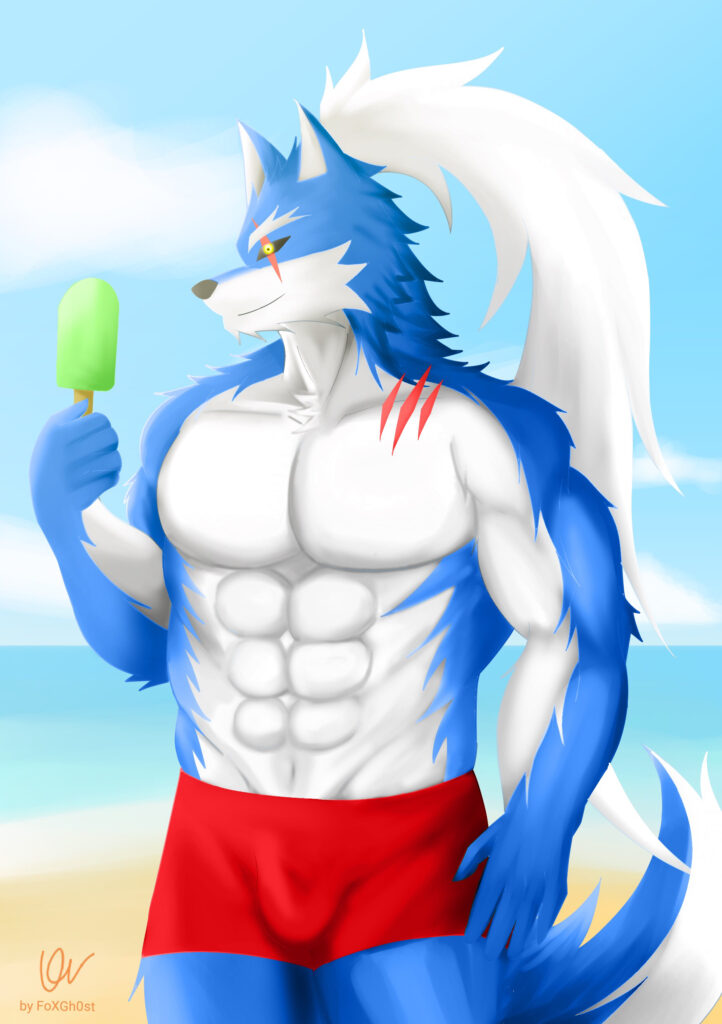
作者:狐鬼
作品名稱:夏天當然是要吃涼爽的冰棒和看爆大肌肌啊!
Looking for Clean, Christian, Fat Furry Art Can Limit Your Options
For years, my FurAffinity account has been posting both normal art and art of extremely fat, but clean, versions of cartoon birds with big bellies and behinds . . . and I'm a Christian, so I put a lot of Biblical references in my art. Here's my question: How come only a few FA artists--like myself--endorse Christianity for fatties, but everyone else posts crude, secular art? I do have some great nonreligious friends, but I still wanna' know.
Signed,
Robert Keown
P.S. I do love furries, but I don't dress up like them because I don't have the money to do so.)
* * *
Dear Penguin,
While there are Christian furries, the majority of furries are not Christians; while there are furries who are into fat furs, they are also in the minority. So, think of a Venn diagram with three circles: one contains Christian furries, one contains fat furries, and a third contains furries only into clean art. When you merge these options together, the ones who are Christian furries into clean, fat fur art are pretty small.
The reason there are not many like you in terms of what you enjoy is because you have a very specific taste that does not relate to a large subgroup.
Hope that answers your question.
Papabear
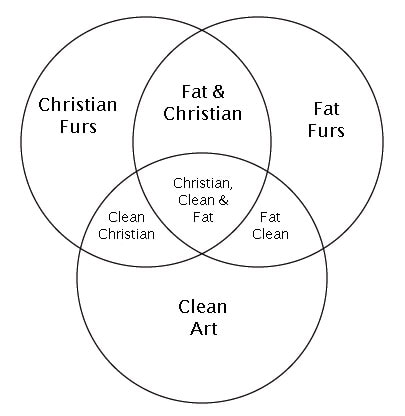
Once More, Join Us For Tea
We’re always excited when a new book by Katie O’Neill is coming down the road (as you may have noticed), and that’s especially true when it’s a new Tea Dragon book! For one last time, join the cast of The Tea Dragon Society in the final book of this magical graphic novel series, The Tea Dragon Tapestry. “It’s been over a year since she was entrusted with Ginseng’s care and Greta still can’t chase away the cloud of mourning that hangs over the timid Tea Dragon. As she struggles to create something spectacular enough to impress a master blacksmith in search of an apprentice, she questions the true meaning of crafting, and the true meaning of caring for someone in grief. Meanwhile, Minette receives a surprise package from the monastery where she was once training to be a prophetess. Thrown into confusion about her path in life, the shy and reserved Minette finds that the more she opens her heart to others, the more clearly she can see what was always inside.” Check out the review over at Comics Beat, and look for Tapestry this September from Oni Press.
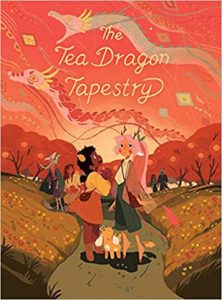
image c. 2020 Oni Press
